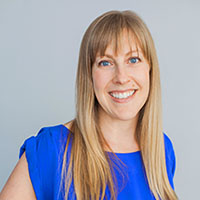
Top 5 benefits stories of 2014
Like most years in recent memory, 2014 was full of twists and turns for benefits professionals. They stayed on their toes as industry developments took shape and trends drove benefits change. Here’s our countdown of what we saw as the top five benefits stories for 2014:
5. Health and financial literacy find the spotlight.
Maybe it was that 86% of consumers find insurance too complex, or that just 14% of Americans can accurately define terms like deductible and copay. Regardless of what sparked the light-bulb moment, the wide gaps in Americans’ health and financial literacy really hit home for employers this year.
Our resource guide “8 health insurance terms every American needs to know” was shared and liked more than 100 times through social media late this summer, information that was just in time for employees to soak up before enrollment season this fall.
We also saw first-hand how engaged companies are in this issue when we had the honor to facilitate the Financial Wellness Working Group “hackathon” this month in collaboration with State Street Global Advisors and IM Consulting. The event produced exciting ideas for the future to rally employers nationwide around improving financial literacy and empowerment.
4. Wellness programs come under hotter fire.
After employee protests over wellness program requirements at CVS and Penn State University made national headlines last year, workers took their complaints to the courtroom in 2014.
CVS cashier Roberta Watterson sued her employer for privacy violations after the company’s wellness screening asked her to disclose her weight, sexual activity and health status or face a $600 medical plan surcharge. The case is still in litigation.
Meantime, the Equal Employment Opportunity Commission also has sued four employers over their wellness programs, citing violations of several federal anti-discrimination statutes, including the Americans with Disabilities Act. The programs’ use of a risk assessment and biometric screening are unlawfully coercive and discriminatory, the agency claims. Those suits also are ongoing.
3. Employers seem unsure about exchanges.
In multiple surveys this year—including our own—employers seem to be taking a wait-and-see approach toward private exchanges. Very few have adopted the model for their health benefit programs; even among the one-third of those considering exchanges, they don’t foresee implementing a private exchange model for at least three to five years.
2. Consumers’ technology use and preferences take off—and employers take notice.
From Fitbit to Fuel band, Mint to Morningstar, it’s been a big year for technology. Apps for budgeting and health tracking expanded in use and wearable tech was everywhere among consumers at work and play. Employees’ top three preferred communications channels this year all are digital, and nearly one-quarter prefer downloading and/or sharing benefits information via smartphone.
More and more, employers are plugging in and honoring those preferences: The 2014 Inside Benefits Communication Survey finds that 40% of employers now optimize their websites for mobile (up from 13% in 2012) and 22% use video, text messaging and mobile apps to communicate (compared to 4% in 2012).
1. Communication definitively linked to employee engagement/loyalty.
No industry news story gratified us more in 2014 than results from the Metlife 12th annual U.S. Employee Benefit Trends Study that show employees who think their employer does a good job with benefits communication are “more than twice as likely to say they are very loyal to their company.” Benefits pros looking to make even larger investments in employee communication now have credible data on their side—great ammo for professionals as they enter 2015 budget meetings.
Not surprisingly, as we scanned our blog, we found the most-clicked entries mirrored the top news and trends of the year. Read or re-read our top five posts of 2014:
1. How HSAs can help curb the ‘Cadillac’ tax
2. Putting your wellness where your wrist is: 4 tips for success with wearable health tech
3. 8 health insurance terms every American needs to know
4. The era of health education—why benefits communication matters for our country
5. Benz-HelloWallet event draws benefits industry heavy hitters to discuss employee engagement
Work with Us
We partner with organizations that value their people first. Let’s talk.

Jennifer Benz, SVP Communications Leader, has been on the leading edge of employee benefits for more than 20 years and is an influential voice in the employee benefits industry.
